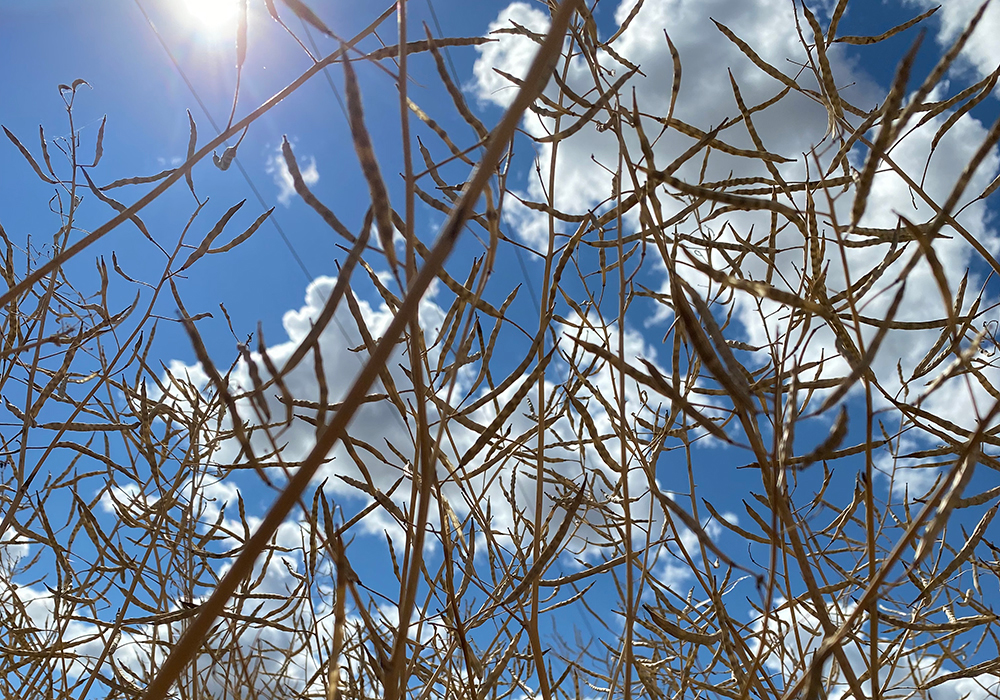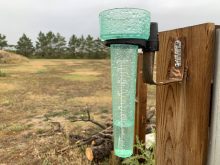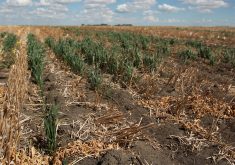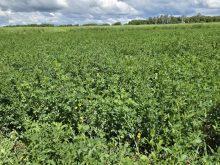Drought is forcing Saskatchewan’s crop commissions to pull out their erasers and sharpen their pencils when budgeting for the 2021-22 fiscal year.
“We realized that we needed to make significant adjustments to the budget we passed in June,” SaskCanola chair Bernie McClean told delegates attending the 2022 annual general meeting.
A new budget was approved by the board in December that slashed anticipated revenue nearly in half to $4.3 million, down from the June estimate of $7.9 million.
Levy dollars will be way down because growers don’t have nearly as much canola to sell as they normally would.
Read Also

Soybean market still figuring out implications of China-U.S. pact
Soybean futures had a muted reaction to the U.S. trade deal with China as the market tries to figure out the nuances of the deal.
Planned expenditures have been cut accordingly to $6.5 million from the June forecast of $8.3 million.
The final tally will be a total deficit of $2.2 million in 2021-22 versus the initial projection of $331,971 in red ink.
SaskCanola executive director Tracy Broughton said they found ways to reduce spending without gutting long-term research and development programs.
“We don’t want to be having a negative impact on long-term innovation in our industry,” she said.
SaskFlax is also forecasting a sizable loss. It is estimating $653,449 in revenue and $1.16 million in expenses for a total deficit of around $500,000, which would be double the 2020-21 shortfall.
“We will be severely impacted by the reduction in flax sales volume,” said chair Greg Sundquist.
“We remain committed to the breeding programs and the research we’ve entered into, but new activities may have to be put on hold until we have a bigger positive side to the ledger.”
SaskPulse is forecasting a budget surplus of $1.9 million based on revenues of $14.5 million and expenses of $12.6 million.
But that is because the budget was created in July 2021 before the extent of the drought was known.
Executive director Carl Potts said the drought will have a “significant impact” on the actual 2021-22 statement of operations.
Fortunately, the group has a massive $11.9 million surplus sitting in its strategic investment reserves, which is far more than it would normally have in that category.
That is on top of another $14.1 million in its revenue variability reserve, which is set aside for years like 2021-22 to cover unexpected and sustained revenue reductions.
The bloated strategic investment reserve is due to a $9 million operating windfall in 2020-21, more than double the budgeted surplus of $4.35 million.
Revenue was $2.3 million higher than budgeted due to a 65 to 75 percent increase in lentil prices.
Expenses were $2.3 million lower than budgeted as COVID curtailed commission activities and there was less spent on research and development.
“Some of the rebuilding of our research and development investments is taking longer than we expected,” said Potts.
The plan is to use the $11.9 million in excess reserves to rebuild the organization’s lagging research and development investments.
McClean said many commissions are struggling with rising levy refund requests.
“It has definitely been trending up over the last number of years,” he said.
The province’s canola growers received refunds amounting to $837,781 in 2020-21, which is nine percent of the total assessed levy.
“There were a large number of levy refunds that came in as a result of the drought,” said Broughton.
SaskCanola’s audit and finance chair Charlene Bradley was asked what the organization will do if there is another drought in 2022.
She said they can draw down their unrestricted net asset reserves like they did in 2020-21. The organization had $3.68 million in reserves as of July 31, 2021, compared to $5.07 million a year earlier.
“But if this drought continues on and we see revenues trending down, we will obviously adjust our budget accordingly and cut out what is necessary to keep a balanced budget,” said Bradley.
















